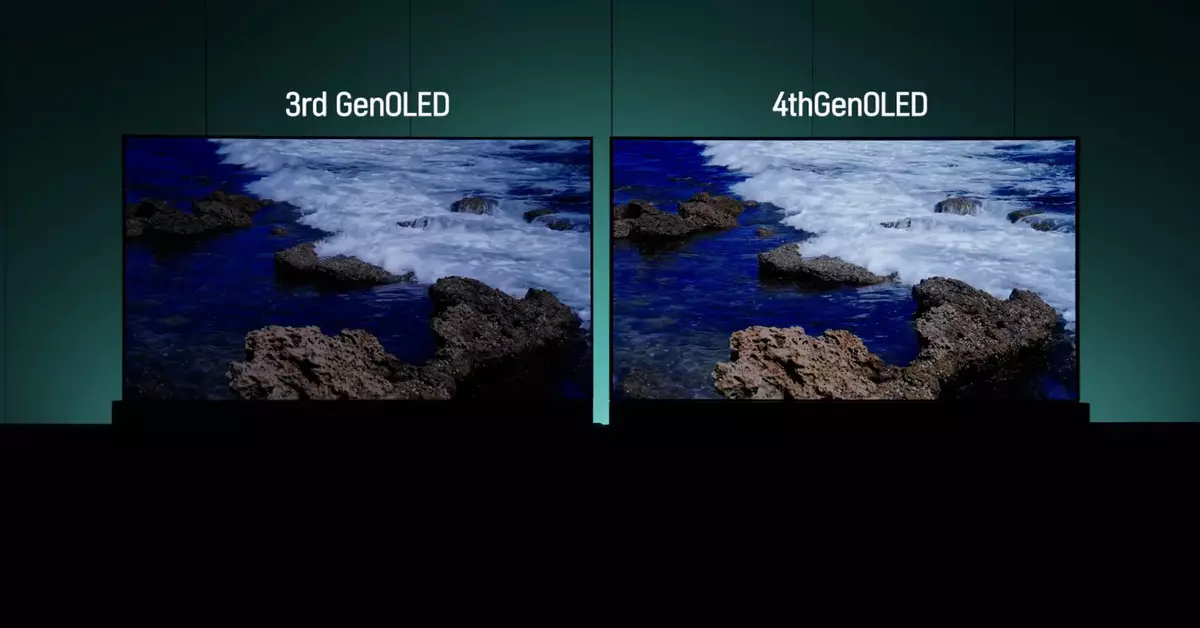In the highly competitive landscape of display technology, each year brings a slew of innovations that aim to captivate consumers and set benchmarks for performance. CES is typically the stage where major companies unveil their latest advancements, but this year saw an unusual twist. LG Display, traditionally a powerhouse of visual displays, adopted a somewhat understated approach. Instead, it was Panasonic that took the initiative to reveal exciting developments concerning LG’s latest OLED technology, stirring the pot of industry discussions around display capabilities for 2025 flagship models.
At CES, LG Display introduced its cutting-edge four-layer tandem OLED design, an advancement intricately conceived to push the limits of brightness and energy efficiency. The claim is audacious: an increase of 33 percent in brightness compared to previous generations, promising peak luminance levels hitting a staggering 4,000 nits. While this assertion is impressive on paper, one might cautiously regard the use of the term “AI TV era” in their promotional materials, knowing all too well how often the concept of AI is interwoven with hyperbole in modern tech marketing. Nevertheless, it merits attention as consumers and industry professionals alike evaluate the implications of such breakthroughs.
The centerpiece of this innovation lies in the Primary RGB Tandem architecture. This proprietary method stands out for its distinctive method of structuring the display’s light source. Unlike its predecessor’s system, which relied on a three-stack method, LG’s new design incorporates independent stacks of red, green, and blue elements—introducing additional layers of blue to enhance color depth and brightness. The implications of this shift are significant; by increasing the layers of blue, LG aims to produce brighter, more vibrant colors without sacrificing image quality, thereby reinforcing its position at the forefront of display technology.
While LG Display’s advancements are commendable, it is crucial to acknowledge the competitive landscape presented by Samsung. The battle for dominance in OLED technology is epitomized by Samsung’s QD-OLED screens, which also exemplify increased brightness and viewing quality. Samsung’s commitment to a glare-free display contrasts with LG’s approach, which opts for a traditional glossy finish tempered by “ultra-low reflective technology.” Herein lies a critical point of analysis—while both companies innovate, their strategies diverge significantly, appealing to different segments of the market.
Energy efficiency is also an area where LG asserts it has improved. The company claims color brightness can reach up to 2,100 nits, reflecting a 40 percent enhancement over previous generations. The execution of high brightness in consumer models, however, remains uncertain. Manufacturers often calibrate these impressive technological capabilities for practical, everyday consumer use, sometimes resulting in lesser peak brightness in production units compared to their theoretical upper limits.
The OLED Experience: What Lies Ahead
OLED displays are known for remarkable attributes such as profound black levels, superior color accuracy, and wide viewing angles, with improvements in speed benefiting gaming enthusiasts. As LG continues to refine its offering, the question remains: how will consumers respond to higher price tags associated with these advancements? The allure of superior technology often entices consumers to invest, yet the financial barrier for top-tier models cannot be overlooked.
In summation, LG Display’s latest innovations present a compelling narrative in the realm of OLED technology. With the introduction of four-layer tandem displays, the company is resiliently positioning itself within an evolving market. As consumers eagerly await the deployment of these advancements in widely available products, one must consider how these innovations not only enhance the technical specifications but also elevate the overall viewing experience. The ongoing OLED evolution offers a glimpse into the future of television, promising a rich tapestry of color and brightness that could redefine how media is consumed. For enthusiasts and casual viewers alike, the thrill of witnessing this rapid advancement stirs excitement about what is to come in the world of home entertainment.

